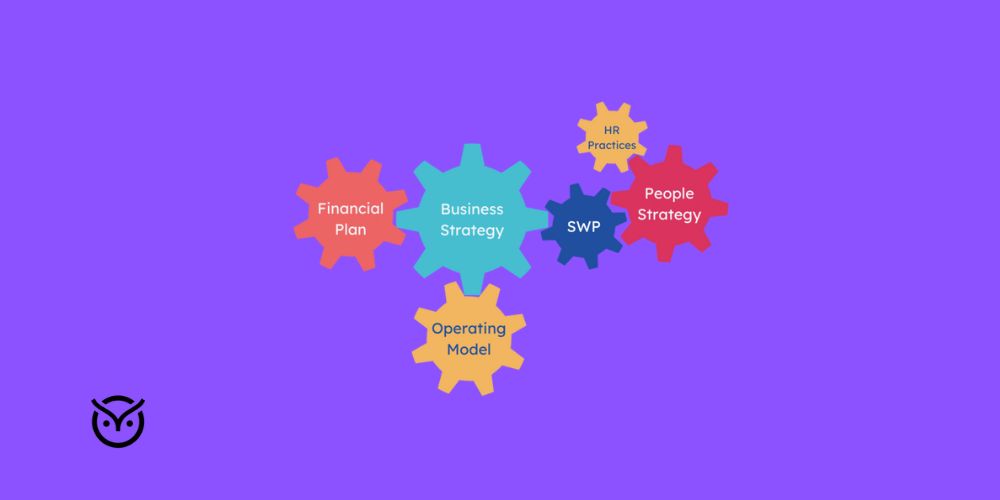How to Find the Best Workforce Planning Tools

TL;DR
- Prioritize tools that handle forecasting, scenario planning, and skills-mapping.
- The right workforce planning tools close gaps, save costs, and boost output.
- Many recruiters lack visibility into future hiring needs. These tools bring clarity.
- Choose tools that match your team’s size, budget, and existing tech stack.
Recruiters and HR teams face plenty of uncertainty. When someone leaves or demand jumps, then HR ends up reacting under pressure. Without a clear view of future hiring and skill needs, businesses either fall short or spend too much. Workforce planning tools fix this by helping you stay ahead instead of catching up.
In this blog, you will learn what these tools are, why recruiters should care, what features to watch for, and how to select the right system for your team. By the end, you’ll have a clear checklist to find a tool that fits your goals.
What Are Workforce Planning Tools?

At its core, a workforce planning tool is software that helps you forecast, analyze, and align your workforce with your business needs. These tools aren’t just for spreadsheets, as they tap into data, run scenarios, and show you where gaps might appear before they hurt operations.
Some are focused on long-term planning (aka strategic workforce planning tools), helping organizations plan 3–5 years ahead. Others specialize in skills based workforce planning tool functions, matching roles or projects to employees’ skills. You’ll also find solutions categorized as workforce development tools, workforce planning systems, or staffing tools, each with a slightly different angle.
When someone asks “what are planning tools?” in HR, they’re usually referring to any solution that helps with demand forecasting, gap analysis, resourcing, and scenario testing. Modern tools may include predictive models, dashboards, and integration with HRIS or ERP systems. According to SkillPanel, leveraging data analytics, AI, and predictive modeling is what distinguishes advanced workforce planning tools in this age.
“Tool or Tactic?” Mini Quiz
Companies that connect planning with skills data make faster, smarter hiring calls and avoid last-minute scrambles.
Why Recruiters Need Workforce Planning Tools

Recruiters aren’t just order-takers filling roles. They’re strategic players. But it’s tough when they work in reactive mode. Here’s why workforce planning tools are a game changer for recruiting:
Prevent Talent Shortages
By using data and projections, you can utilize workforce planning to avoid talent shortages. Instead of realizing you’re short at the last minute, you get early signals of upcoming gaps (due to turnover, growth, or market shifts).
More Efficient Hiring
Smart planning tools help you prioritize roles. You avoid overhiring and instead hire just what’s needed. This can reduce hiring costs and cut waste. Strategic workforce plans help you target where to invest in external hiring vs internal development.
Align Skills with Strategy
Recruiters can use workforce forecasting and workforce planning, and analytics to make sure hires match future skills demands. When you know what skills will matter in 2–3 years, hiring isn’t just filling current gaps. It’s building for tomorrow.
Support Diversity, Flexibility & Agility
Tools let you model multiple scenarios (e.g. remote vs in-office, gig workforce, cross-training). That helps you respond to market change or talent shifts without chaos. As McKinsey notes, such planning gives your team “fluidity of resources” and helps connect HR to financial and operational goals.
Data-Driven Decisions
Without tools, recruiters rely on intuition, hearsay, or limited metrics. With planning systems, you base decisions on real numbers such as turnover trends, headcount, succession gaps, etc. That boosts accountability and clarity.
In short, for recruiters to move from firefighting to foresight, workforce planning tools are essential. They help turn intuition into evidence and reaction into planned action.
Key Features to Look for in Workforce Planning Tools

Finding the right workforce planning tools isn’t about picking the one with the flashiest dashboard. It’s about finding software that helps you predict, plan, and adapt your people strategy.
Here’s what matters most when comparing options:
Forecasting and Scenario Planning
A solid system should offer workforce forecasting features that predict talent needs months or even years ahead. It should let you simulate “what-if” scenarios like hiring freezes, expansion plans, or skill shifts, so you’re never caught off guard.
Skills Mapping and Analytics
Modern strategic workforce planning tools go beyond job titles as they map actual skills. This helps companies redeploy employees effectively instead of constantly hiring externally. Integrating workforce planning and analytics ensures you can see where skill surpluses or shortages are forming across departments.
Real-Time Dashboards
Dashboards make data usable. The best workforce planning systems visualize metrics such as attrition, turnover, productivity, and capacity in one view. That clarity allows HR and leadership to collaborate without drowning in spreadsheets.
Integration with HR Tech Stack
Whether it’s your HRIS, ATS, or payroll, your planning system should integrate seamlessly. A skills based workforce planning tool that connects with your recruitment software helps recruiters link hiring decisions with long-term strategy.
Automation and AI
AI isn’t just hype. It’s practical. Many modern workforce development tools use automation to refresh data, build predictive models, and suggest reskilling paths. This saves hours of manual work and cuts errors from manual planning.
Feature Match Puzzle
Drag each definition onto the correct feature. Match all to unlock the checklist.
Grab your one-page checklist to use during vendor demos.
Download “Top 10 Features Every Workforce Planning Tool Must Have”How to Choose the Right Workforce Planning Tool

With hundreds of staffing tools and planning systems out there, selection can feel overwhelming. Here’s how to find one that fits your needs and not just your budget.
Step 1: Identify Your Planning Maturity
If your team still relies on Excel or Google Sheets, start small. A user-friendly tool that automates manual processes is enough to make progress. If you already track advanced metrics, consider moving to strategic workforce planning tools that support automation and deeper analytics.
Step 2: Define Goals First, Not Features
Many companies buy tools they don’t fully use. Define why you need one. Is it to cut hiring delays, improve reskilling programs, or utilize workforce planning to avoid talent shortages? A clear purpose will narrow your choices.
Step 3: Check Scalability and Support
The right workforce planning systems grow with you. Whether you’re a startup or a global enterprise, the tool should handle more users, departments, and data over time. Strong vendor support and onboarding are crucial especially for non-technical HR teams.
Step 4: Prioritize Data Security and Compliance
Any platform handling employee data must comply with GDPR or other local privacy laws. Make sure your provider follows global HR data protection standards.
Step 5: Test Before You Commit
Ask for demos and free trials. Test how easy it is to model scenarios or create reports. Involve both HR and finance teams in evaluations since planning affects budgeting too.
When used effectively, workforce planning tools act like a GPS for HR, showing where your workforce is today, where it’s headed and what route gets you there with minimal detours.
Build Your Ideal Workforce Planning Tool
Answer three quick questions to see your best-fit option. No sign-up. Instant result.
Why you got this result
Conclusion
Recruiters can’t rely on instinct alone anymore. The market changes too fast, skills evolve too quickly, and talent competition never slows down. Workforce planning tools bring logic and foresight into what used to be guesswork.
By choosing a solution that fits your company’s size and goals, you’ll move from reactive hiring to proactive growth. These systems turn data into direction. So, before your next hiring wave or restructuring, look ahead. A well-chosen planning tool shapes the future of your organization.
FAQs
Can small businesses use workforce planning tools?
Yes. Many cloud-based workforce planning tools are designed for small and midsized companies. They provide scalable plans, helping growing teams manage staffing and budget forecasting without expensive enterprise systems.
How do AI-powered tools improve workforce planning?
AI-powered systems analyze large datasets to detect skill shortages, predict attrition and recommend future hiring plans. This gives recruiters actionable insights rather than static reports. AI also powers automation saving hours of manual forecasting work.
What features should I prioritize in workforce planning software?
Look for a balance between usability and power. Key features include real-time analytics dashboards, scenario modeling, skills mapping and integration with your existing HR or recruiting tools. Focus on a platform that helps you forecast accurately and align workforce goals with business growth.






